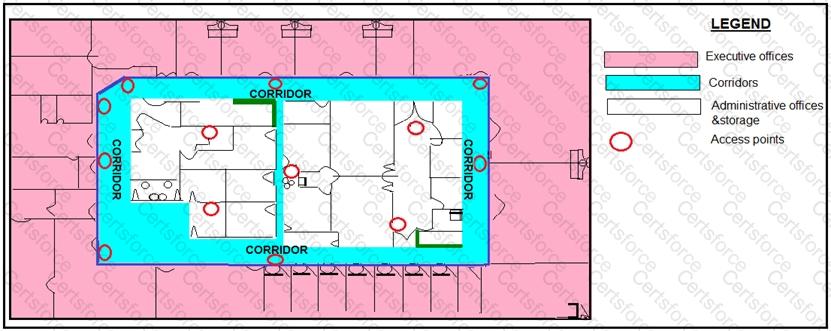A customer requires that two wireless APs be installed in a reception area, in a historic building, the impact of the APs on the appearance of the reception area must be minimized. Which two AP antennas should be used? (Choose two.)
An engineer must create data link redundancy for the company’s Cisco Wireless LAN controller. The engineer has decided to configure LAG-based redundancy instead of port-based redundancy. Which three features of LAG-based redundancy influenced this decision? (Choose three.)
An engineer has configured guest anchoring for a newly created SSD however, the mobility tunnels are not up, and EPING is failing from the foreign WLC to the anchor WLC. Which traffic flow must be allowed at the firewall to enable the communication?
Refer to the exhibit.

An engineer determined that during a recent controller failure, some APs did not failover to their secondary controller based on the network design, which has sufficient licenses for all APs. The controllers are not in a mobility group but have A records for their hostnames in DNS. Which setting needs to be addressed?
Based on a wireless network design, an engineer configured a primary and secondary controller for their APs. A power interruption caused the primary Cisco WLC to go down, and, as expected, all APs joined the secondary controller. When the primary controller came back up, all the
APs remained joined to the secondary controller. Which approach must the engineer take for the APs to move back to the primary?
An engineer designs a new wireless network that uses a Cisco Catalyst 9800 Series wireless controller. The controller must be in a DMZ. The internal network is to be at the main on-premises data center of the customer. In addition, the customer wants to establish an EoIP tunnel to a Cisco 5520 WLC that is in a regional force. How must this requirement be incorporated into the design?
Refer to the exhibit.

What is the main reason why the Wi-Fi design engineer took a different approach than installing the APs in the offices, even though that installation provides better coverage?
What is the maximum recommended number of SSIDs per WLAN to avoid excessive overhead?
An engineer is designing a network deployment for a technology company. The company has four buildings with access points that must provide seamless wireless coverage and client roaming. The customer data center must have two WLCs and the core switches for the network. Which type of wireless architecture must be used?
A customer deploys a new Cisco high-density wireless network within the open areas of a mall to provide free public wireless on 5 GHz. The existing mall tenants have their own wireless networks that are independently managed. Which design approach minimizes channel
utilization for the public network?